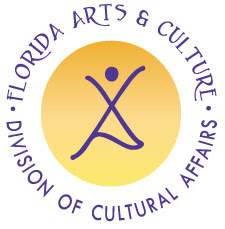‘Untitled’ (c. 1965–69) by Frank Albert Jones. (Photo by Marc Bernier, courtesy the Blanchard-Hill Collection)
Terms of Art: Looking at the American South, the Studio Museum Considers the Insider-Outsider Divide
Gallerist
By 3/26 10:00am
The 28-year-old artist Jacolby Satterwhite has reached a milestone in his career, with his work included in the current Whitney Biennial. For his mother, it has been a different story. “She has over 10,000 drawings; they’re stacked up to the ceiling,” Mr. Satterwhite said in a phone interview last week. Patricia Satterwhite, who is 63 and lives in Columbia, S.C., has for years been making sketches of products, often fanciful and slightly frightening, that she proposes selling on cable shopping channels. Diagnosed with a mental illness, she has not left her home in years, and her work has never been shown.
The mainstream art world has never known quite what to make of (or even what to call) art created by nontraditional artists—people who are self-taught, mentally ill, disabled or incarcerated. There are museums and fairs dedicated to outsider art, art brut, visionary art, folk art and more, and interest in those overlapping, ill-defined fields has ebbed and flowed over the years. But now, it is reaching new heights. Recent editions of the prestigious Venice Biennale and Documenta included the work of so-called outsiders, and curators, museums and galleries are devoting space to it. This Thursday, Ms. Satterwhite will finally have her debut, at the Studio Museum in Harlem, showing alongside her son in a show called “When the Stars Begin to Fall: Imagination and the American South.”
Organized by the museum’s assistant curator, Thomas J. Lax, the show has work by 35 artists, with well-known contemporary figures like Kara Walker and David Hammons appearing alongside far less familiar names. There’s Frank Albert Jones (1900–69), who made intricate architectural drawings, filled with mischievous ghosts, while in a Texas prison. And there’s J.B. Murray (1908–88), who at 70 began making expressive abstract works that he said channeled the word of God, inspired by visions prompted by an eagle flying over his Georgia home.
“With many exhibitions that look at the relationship between self-taught and trained artists it’s this kind of ground-figure thing,” Mr. Lax said in the Studio Museum’s lobby. “The ground from which the academically trained artist can emerge is the self-taught artist.” That, he said, is a false premise. “I was really trying to challenge myself to think … What are a shared set of conceits?” His conceits include how artists have approached the historical, fantastical and religious legacies of the American South, and the idea of the self-taught artist within it.
...
“A lot of these artists are known, but it’s only now that there is more in-depth stuff being done on them,” said Randall Morris, of the Cavin-Morris gallery, which specializes in such work. Why has it taken so long for them to be fully embraced by the art world? “African-American art has always come last,” he said. Work by self-taught African-American artists doubly so. “The work got dispersed out and collected a lot, but the research didn’t catch up with it. … People are finally doing the research that should have been done in the first place.” But Mr. Morris is also skeptical about the new interest. “I think it’s silly,” he said. “First of all, we don’t use the word ‘outsider.’ We think it’s a racist—it’s the wrong word to use for disenfranchised people. It’s not a movement. It’s been here for hundreds of years. Whatever the art world does with it isn’t going to change it.” Cavin-Morris uses the terms “mainstream” and “nonmainstream” for the work they show. “To me, that’s as least insulting and as simple as you can get it,” he said.
Much of the art in “When the Stars Begin to Fall” embodies the tensions between inside and outside, trained and untrained. The choreographer, theater director and artist Ralph Lemon is showing new photographs from a long-running project with residents of rural Little Yazoo, Miss.—“a kind of both allegorical and aleatoric play with the South” is how he describes it. His subjects sit in their homes, wearing animal masks or costumes, responding to his directions. He doesn’t think of it as art or performance, and he thinks they don’t either. He pays them for a day of work, terming it “a kind of playful labor.”
“I think it’s a conversation about who they are and where they’re from and who they think I am and where I’m from,” he said. He sees the whole project as “problematic, maybe a little exploitive,” but notes that he’s “very, very mindful in how I talk about this work.”
Read the whole article here
Calvin Morris Gallery
I'm a big proponent of self-taught southern artists and feel this conversation needs to be further explored. Southern artists in general are traditionally underestimated and self-taught artists doubly so. There are regional art movements across America that are not fully recognized for many reasons by the New York high art world. It's certainly not the quality of work that disqualifies these self-taught artists. Maybe when art is quantified only as a commodity the artist that has an uncontrollable output is easier to avoid. Bravo to Cavin-Morris Gallery located the heart of the New York art scene, trying to swim upstream! GL










No comments:
Post a Comment